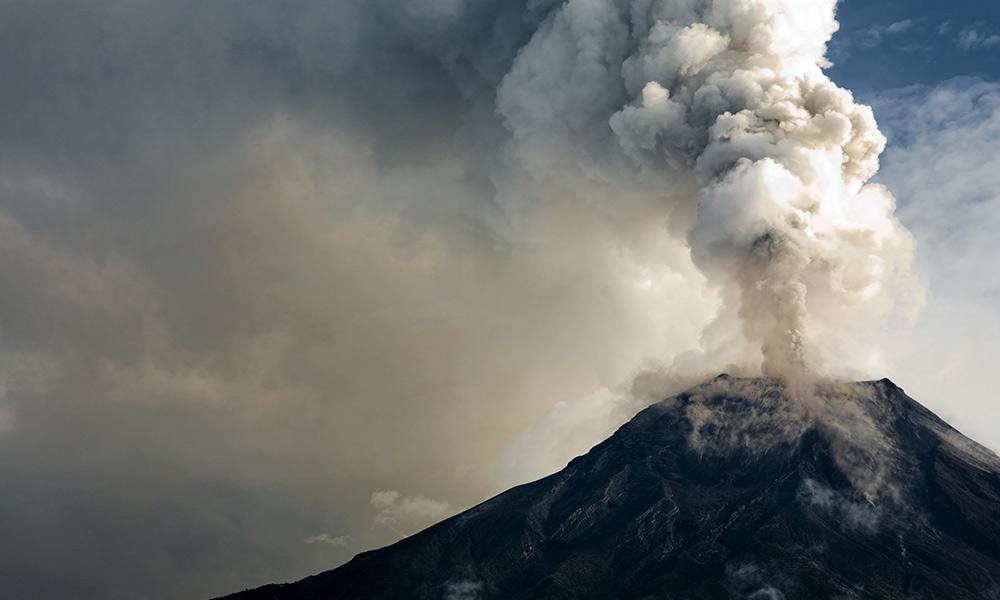Fast and localized temperature measurements during earthquakes or volcanic processes
Research by the Universidad Carlos III de Madrid
10/25/21
The Universidad Carlos III de Madrid’s (UC3M) Displays and Photonic Applications Research Group has developed a measuring instrument that can be used to study the increase in temperature during volcanic eruptions. This research allows the first measurements of temperature to be taken in situ using a machine in the laboratory that simulates these volcanic processes. The measurements that can be taken have enough spatial and temporal resolution to provide information about the sliding mechanics of a seismic fault. Until now, there has not been an effective experimental technique for measuring the temperature at the eruption site.

The understanding of earthquake or volcanic process physics is hindered by the poor knowledge of fault strength and temperature evolution during a seismic slip. When one of these types of phenomena occurs, energy is radiated as elastic waves due to the imbalance between the energy released around the fault and the energy dissipated within it. This occurs because rocks lose strength faster than the stress drop to which the rock is subject to around the fault.
Laboratory experiments used for this type of study, partially developed at the Institute of Volcanology in Rome, reproduce both the evolution of the shear strength on a point of a fault and the propagation of the seismic rupture on temporal and spatial scale.
This provides information about the deformation processes that control seismic mechanics. “We are able to measure the exact point at which the phenomenon is happening. In addition to this, we can determine the increase in temperature in very small areas, which would not be possible using other techniques. The techniques we have used in this research can withstand extreme situations and temperatures greater than 1,200 degrees,” notes Carmen Vázquez, lecturer at the UC3M’s Department of Electronic Technology and one of the researchers taking part in this study.
Optical fibre was used to measure the temperature between two tectonic faults during an earthquake, as this technique can be used to take measurements in environments that are difficult to access.
It is also an economical technology and allows measurements to be taken remotely. “We have two stones; in one stone we made a hole that we fed the optical fibre through, we then measure the temperature on the contact surface between the two surfaces. This simulates a seismic test, in other words, what might happen during an earthquake or volcanic process,” says Arántzazu Núñez-Cascasm, a Juan de la Cierva Visiting Professor at the UC3M’s Department of Electronic Technology and researcher on the project.
The technique used for this study can also be used in other industrial sectors. “It could be applied to industrial machine processes where friction occurs between two materials which causes a sharp increase in temperature. It would allow us to know whether the machine processes are adequate and, therefore, whether the work tool is being damaged or if there will be any subsequent breakages,” concludes Carmen Vázquez.
Bibliography: Aretusini, S., Núñez-Cascajero, A., Spagnuolo, E., Tapetado, A., Vázquez, C., & Di Toro, G.(2021). Fast and localized temperature measurements during simulated earthquakes in carbonate rocks. Geophysical Research Letters, 48(9). https://doi.org/10.1029/2020GL091856